Project details
Skill
Cost
Estimated Time
End-grain cutting boards are attractive, useful, and a great addition to any kitchen. Not only is their checkerboard pattern distinctive, but end-grain cutting boards have a unique ability as well—the fibers of the wood separate with each cut of the knife to absorb the impact of the blade, hiding nicks and helping the knife stay sharp. Building your own end-grain cutting board makes it that much more special and can be a highly enjoyable and satisfying experience.
Maybe you have a slab of wood you’ve been saving for a project just like this one, or there’s a piece of furniture you’re looking to repurpose. If not, hardwood stores and lumber yards generate a lot of scrap wood, and all you have to do is pay them a visit to check out what’s available.
Steps for Making a Wood Cutting Board:
Follow these directions to make your own cutting board.
Step 1
Select the Wood
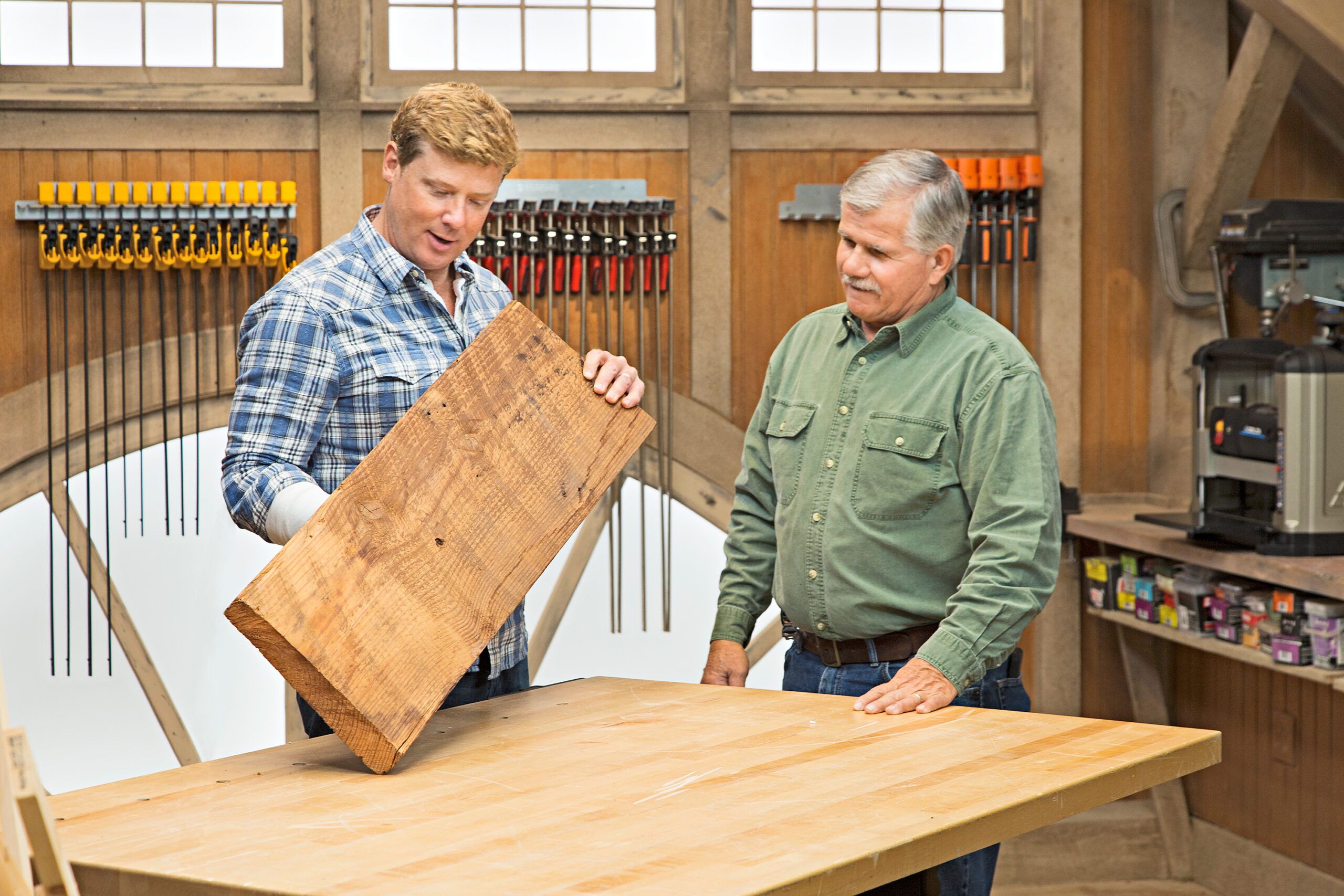
For this project, you’ll need a slab of wood at least 2 inches thick, 12 inches wide, and 3 feet long. Hardwoods such as maple or cherry are preferable to soft woods such as cedar or Douglas fir because they last longer and can keep out food bacteria more effectively. Oak is a hardwood, but it isn’t a good option because of its open-grain structure.
Also keep in mind that not all wood is food-safe. Choose types that are known to yield edible products (such as fruits and sap), and stay away from exotic varieties that haven’t yet been cleared for culinary use.
Step 2
Prep the Wood
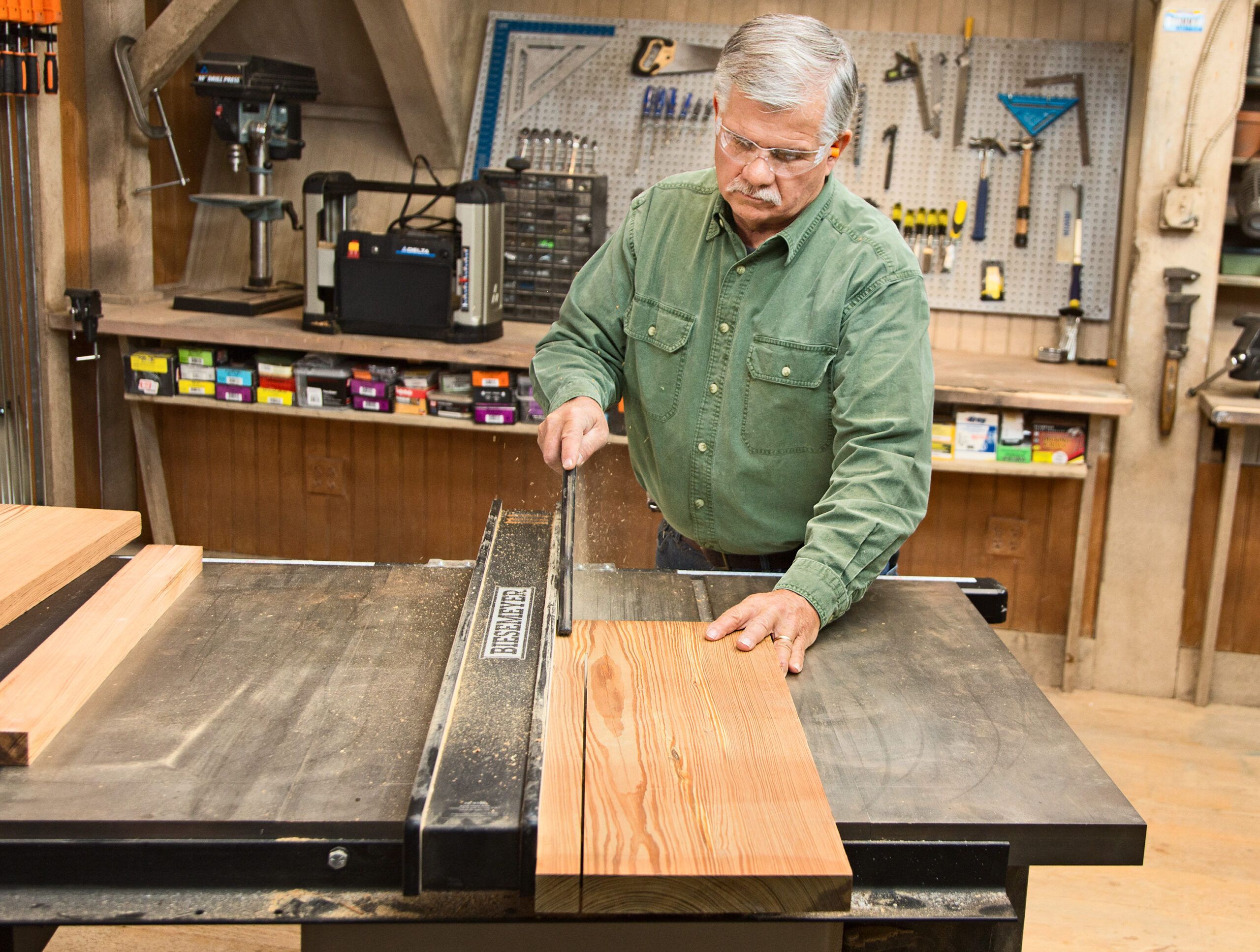
Set the depth of your planer to remove 1⁄16 inch of wood at a time. Run the board through it several times to flatten both faces. If the grain on the board’s side has a slope, feed the board into the planer starting with the end that the grain slopes down toward. If the board is cupped from side to side, place the concave side against the planer table and flatten the convex side first, then plane the concave side.
Using a miter saw, crosscut the board into two equal pieces and square up the ends. Then use a table saw to trim the weathered wood from each side and rip the board into strips that are the same thickness on all four sides.
Step 3
Glue the Strips Together
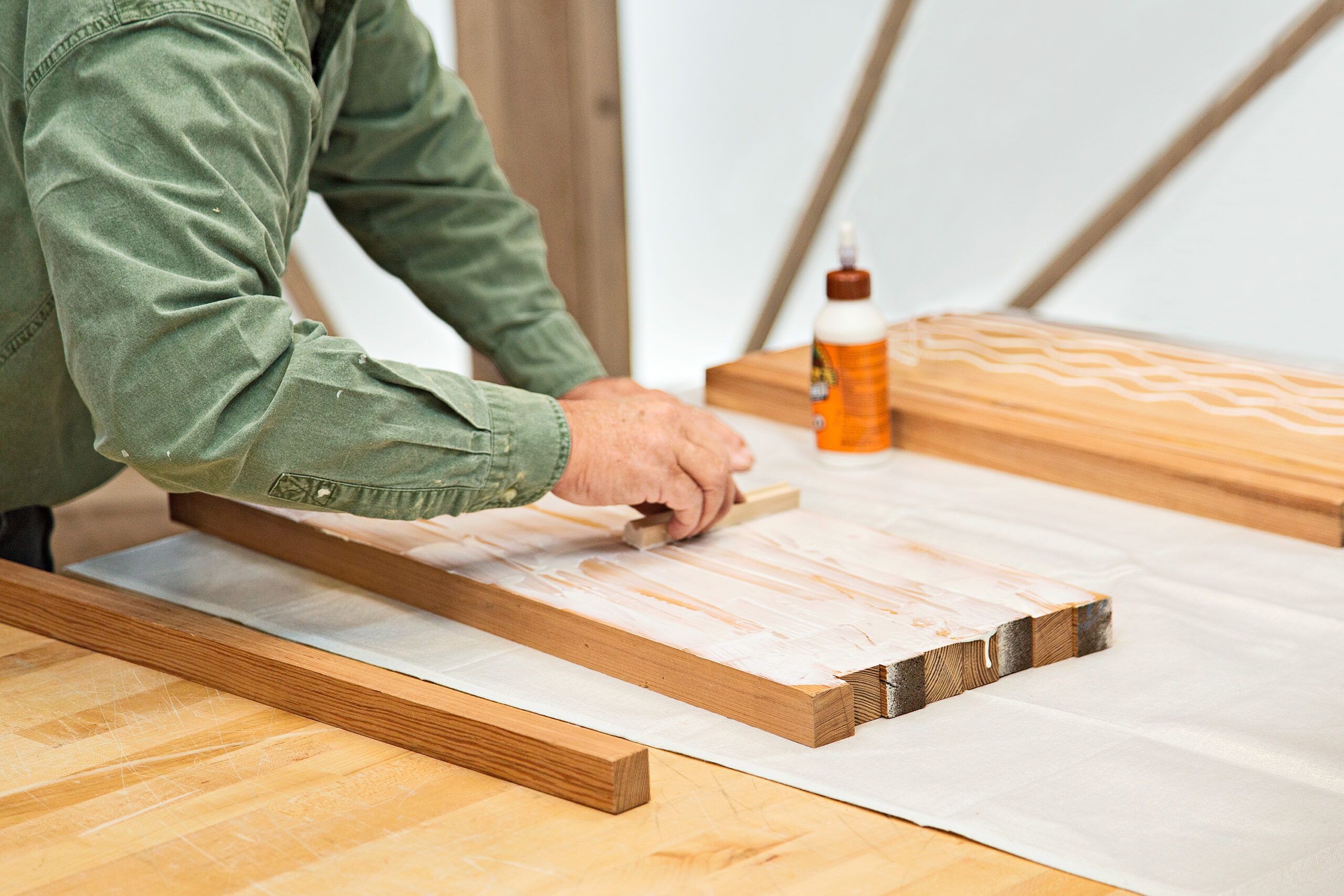
Place the strips on a workbench and divide them into two groups. Turn each strip so that the direction of the end grain varies from one strip to the next. This ensures that the finished block won’t warp or split when the wood is exposed to water.
Set aside one strip in each group and turn the others a quarter turn counterclockwise. Apply and spread a food-safe, waterproof wood glue on the turned strips, first with an acid brush, then with a stick. Rotate each strip back a quarter turn, then place each set-aside strip against the exposed glue on one side of each assembly.
Step 4
Clamp and Cut
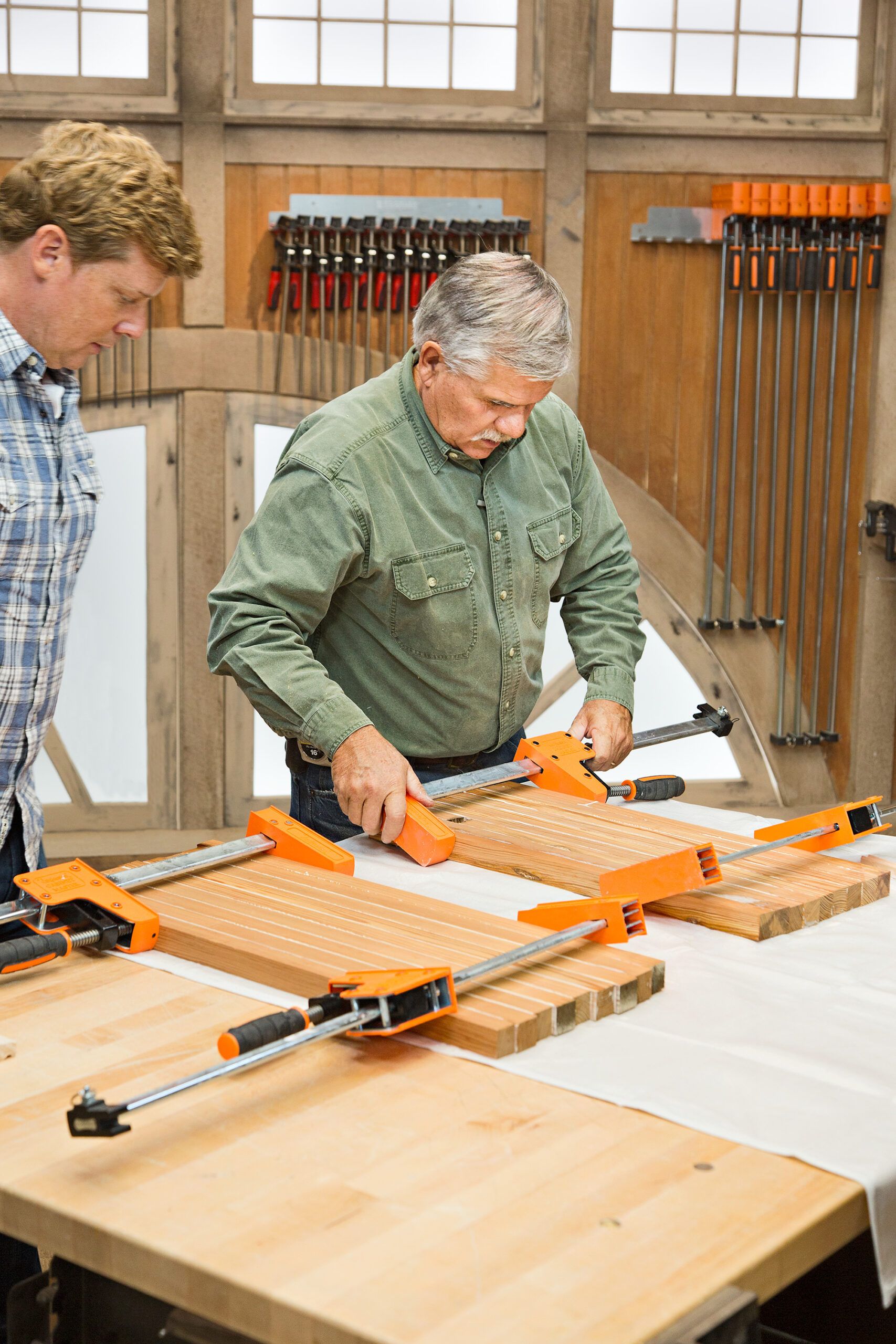
Clamp the assembled strips into two panels. Use a damp rag to wipe up any glue that squeezes out.
After the glue is dry (one to two hours), clamp a stop to the miter-saw table 2 inches from the blade. Trim the panel ends. Butt an end against the stop as you cut each panel into identically sized strips.
Step 5
Stagger the Strips
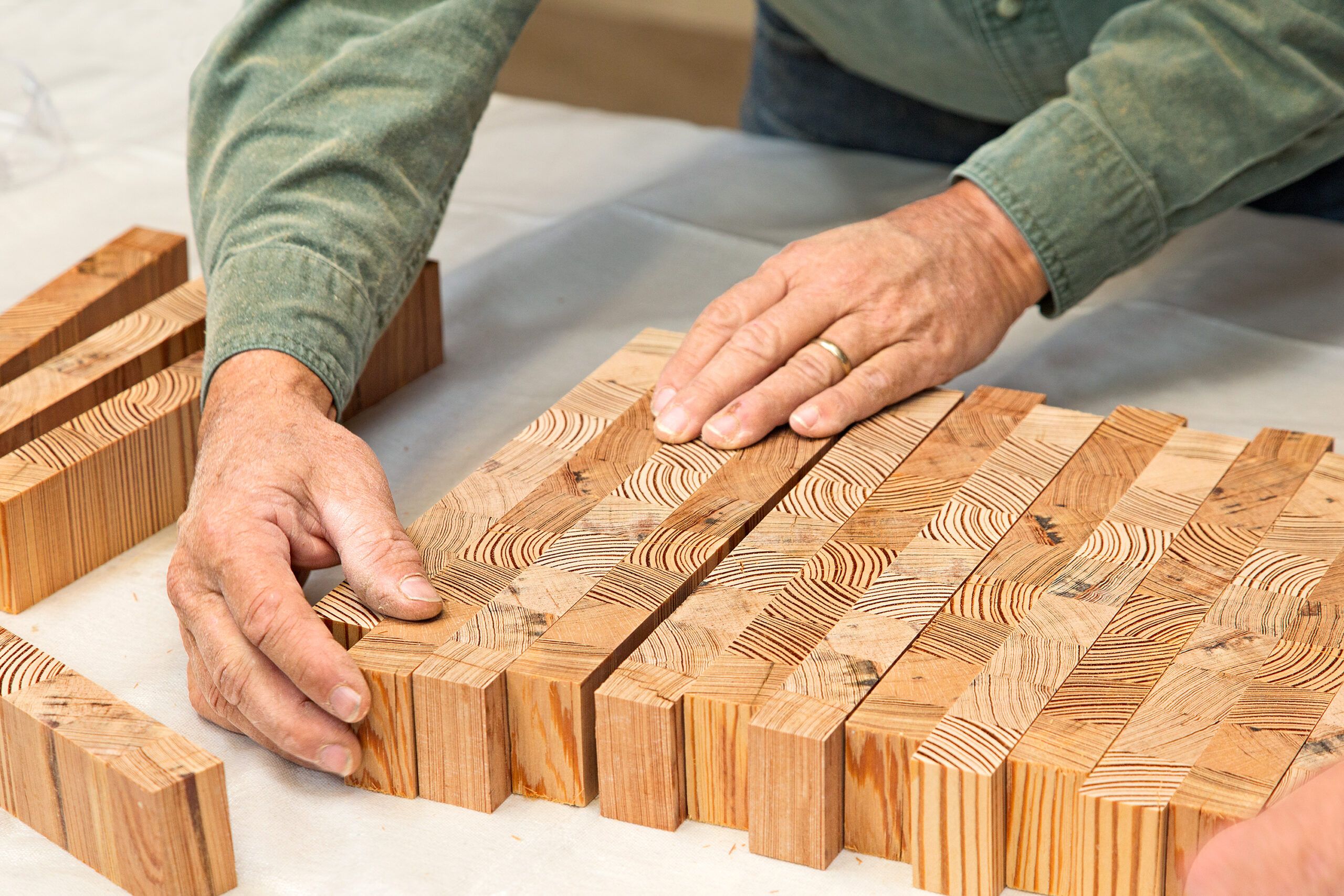
Position all the strips so the end grain faces up. Shift each one sideways so that the glue joints in each strip are offset from the ones in the neighboring strips. Use the same gluing technique as above to make a single panel, and glue a sacrificial 2x to each end. Clamp the panel and 2x’s for about an hour.
Step 6
Finish and Sand
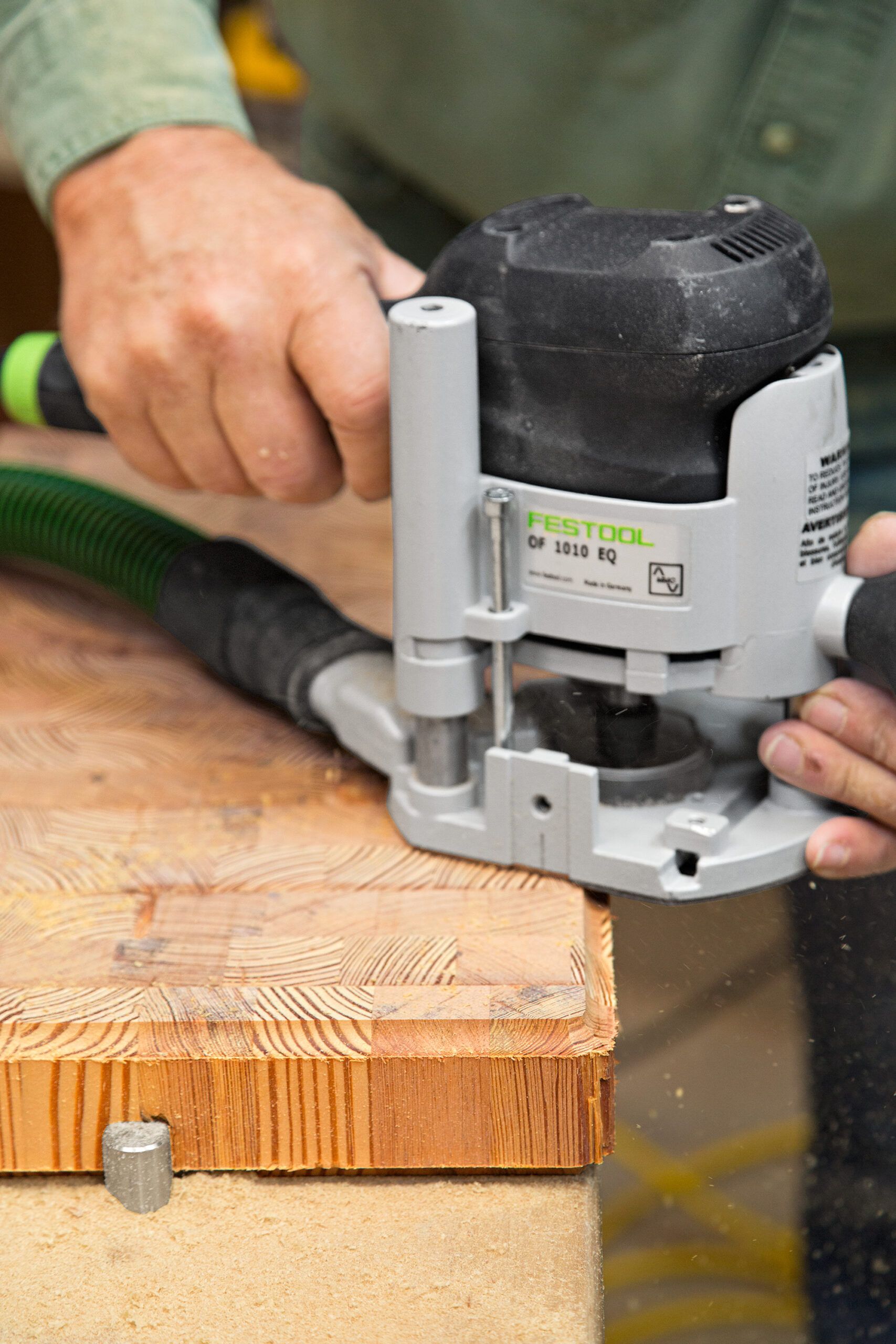
Use a circular saw and edge guide to trim one side square to the ends. Trim the other side with a table saw.
Run the board through the planer to smooth out the faces. The 2x’s prevent the ends from chipping. After planing, slice them off with the miter saw.
Using a router, round over each vertical corner, then rout a cove in the board’s top and bottom edges.
Smooth all the sides with a random-orbit sander, starting with 100-grit sandpaper and finishing with 320 grit.
Step 7
Coat with Mineral Oil
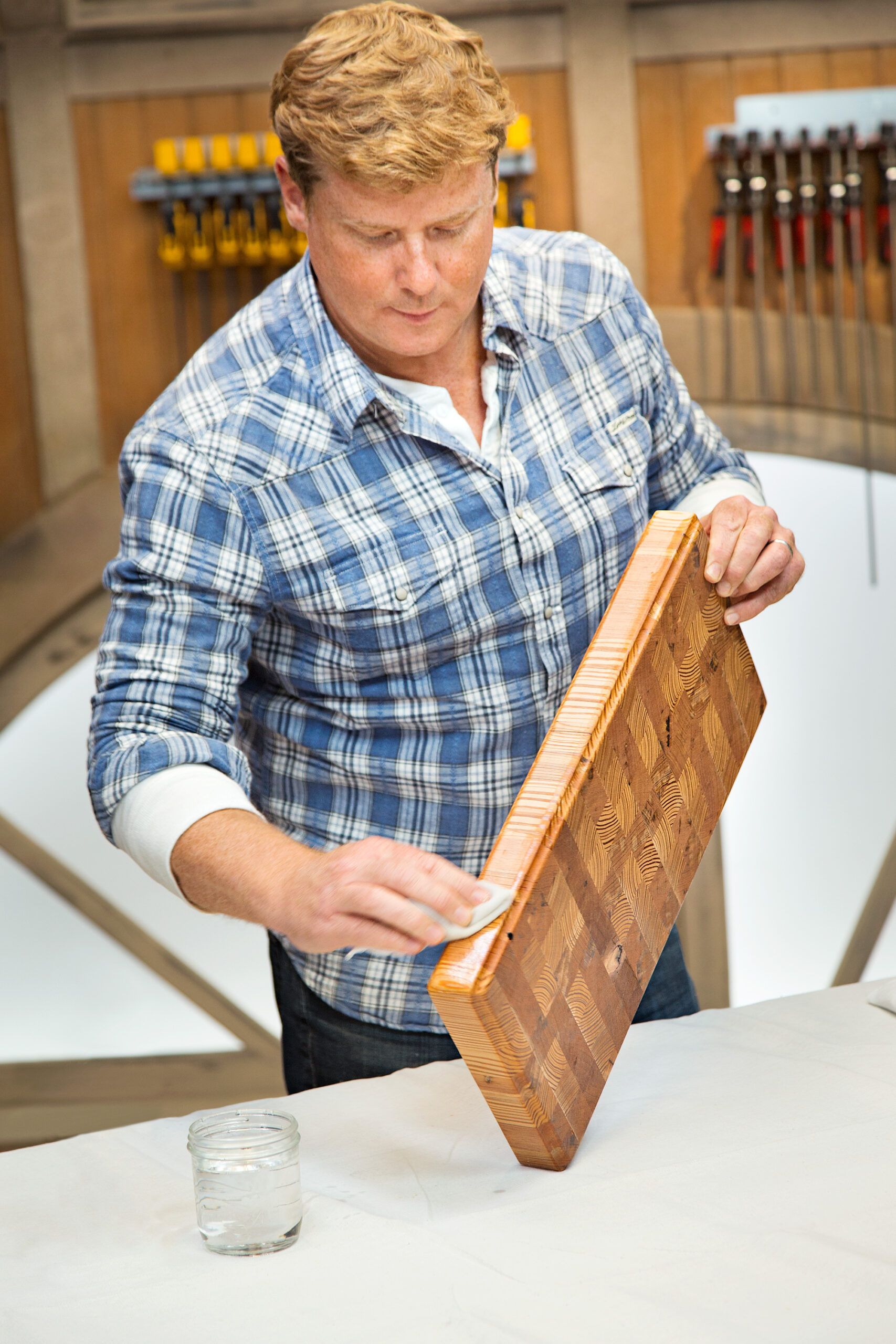
Rub mineral oil onto every side of the board. This food-grade oil warms up the wood’s color, repels water, protects against stains, and won’t turn rancid. After 20 minutes, wipe off any excess, then reapply, wait, and wipe again. Reapply the mineral oil as needed.
Recommended Tools:
 Bar clamps
Bar clamps Benchtop planer
Benchtop planer Miter saw
Miter saw Table saw
Table saw Circular saw with rip fence
Circular saw with rip fence router
router roundover bit with bearing – 1/2-inch
roundover bit with bearing – 1/2-inch cove router bit with bearing – 3/8-inch
cove router bit with bearing – 3/8-inch Random orbit sander
Random orbit sander









